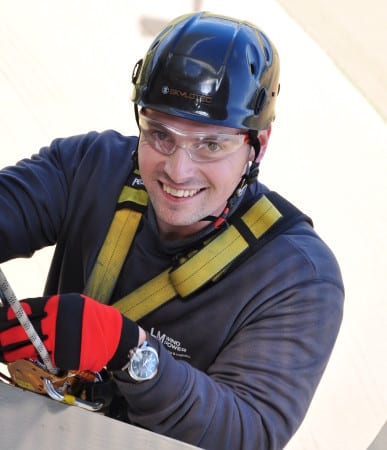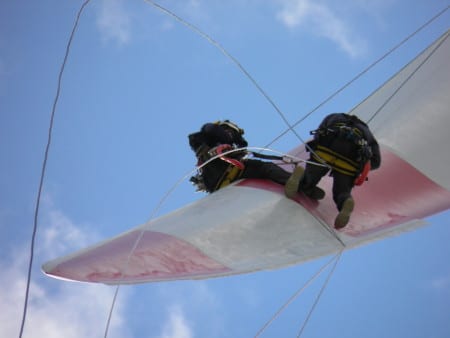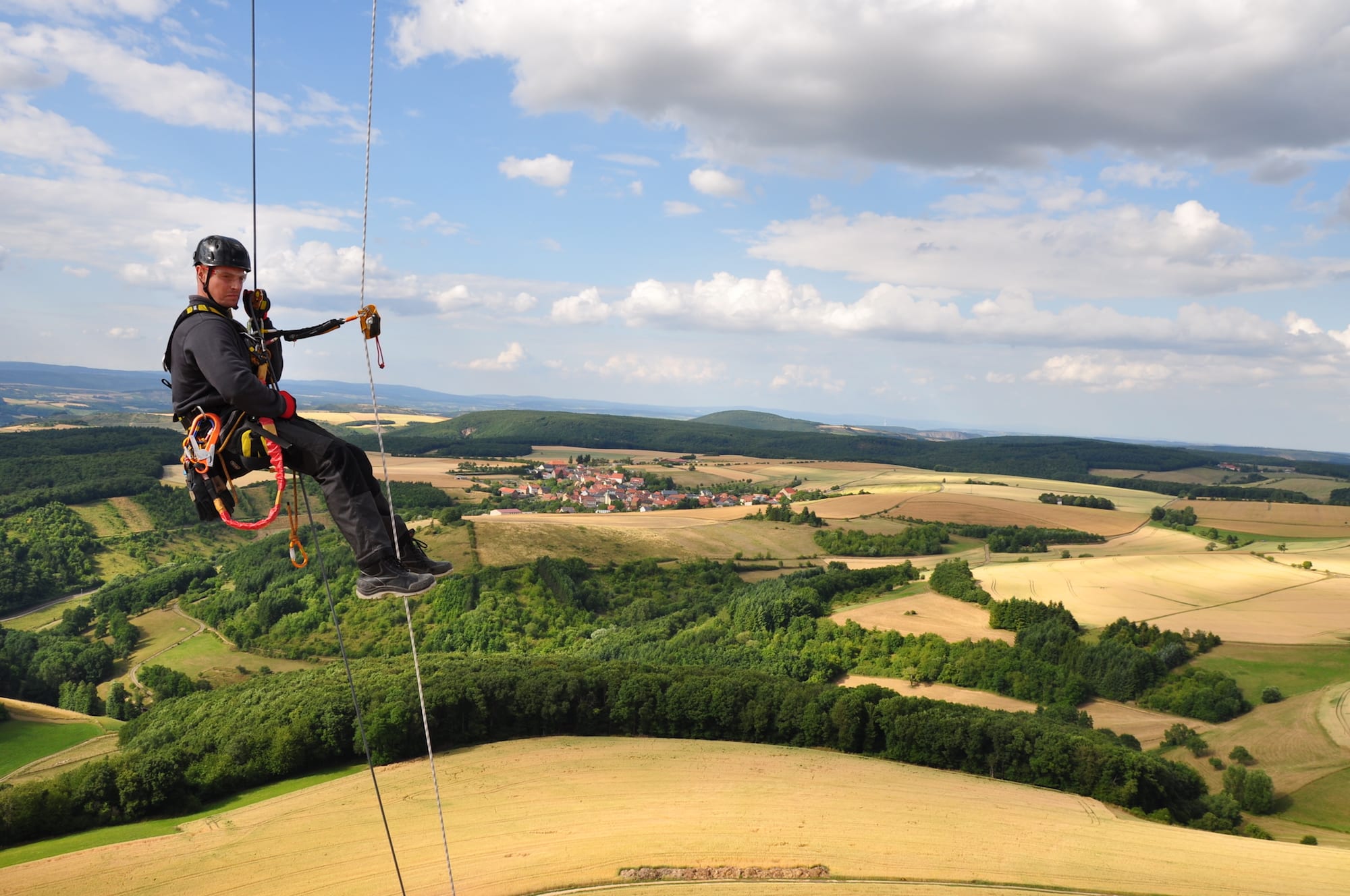Wind energy is one of the fastest-growing sources of electricity across the world, accounting for 33 percent of all new electric power capacity in the U.S. alone since 2007. Servicing these powerful machines hundreds of feet off the ground isn’t for the faint of heart. But for dedicated rock climbers, this potentially dangerous form of field service is a way to pay the bills by putting technical skills and a passion for climbing to work.
An added benefit? The job prospects are good. Wind service technician is the fastest-growing job in the U.S., according to the U.S. Bureau of Labor Statistics, and jobs will nearly double in the next 10 years.
Finding a Niche — and a Day Job — in Field Service

Marcin Majdzik
Marcin Majdzik, operations manager at international rotor blade supplier LM Wind Power in Poland and a climbing enthusiast, says most techs who use ropes, rather than mechanical platforms, to scale turbines have at least some climbing experience.
“Highly-qualified rope access technicians are mainly outdoor enthusiasts,” he explains, adding, “Staying in good shape is a lifestyle for them.”
Below, Majdzik offers a glimpse into life as a wind turbine tech, when the daily grind means dangling hundreds of feet in the air.
The Job: Preventing Problems
Wind turbine blades are often exposed to extreme weather conditions such as heat, sand, rain, snow and hail. This wear and tear can wreak on havoc blades by eroding the surface, which decreases aerodynamics and results in a reduced output. Regular service and maintenance inspections are key to help maintain blade performance and to prevent minor issues from developing into larger problems.
A Familiar Toolkit
The toolkit, it turns out, isn’t all that different from what Majdzik and his team would carry along for a weekend climb. The most important tool? Ropes and blade-climbing gear.
While hydraulic elevated platforms that “climb” up the tower are useful for specific types of maintenance, Majdzik says rope teams of three technicians is a quicker, more cost-effective way to reach the top of a tower.
“As blades are getting bigger and bigger, turbine hub height is also increasing, and in many cases rope access is the only method available,” he says.
Apart from specialty rope gear, Majdzik says the technicians use “standard, off-the-shelf” electric tools to repair damaged blades.
The First Rule of Wind Turbine Service? Safety
 The machines, like the job prospects, are often outsized. Towers can rise more than 250 feet tall, and each fiberglass rotor blade can reach 150 feet long. To learn how to work at potentially deadly heights, techs must complete extensive training programs, including rope access certification, and continually refresh their skills.
The machines, like the job prospects, are often outsized. Towers can rise more than 250 feet tall, and each fiberglass rotor blade can reach 150 feet long. To learn how to work at potentially deadly heights, techs must complete extensive training programs, including rope access certification, and continually refresh their skills.
“All technicians go through comprehensive training on rescue in heights, firefighting [and other tasks], and they always work in teams to allow the crew members to support each other in case of an emergency,” Majdzik says.
Despite the risks, Majdzik is confident in the safety precautions and frequently climbs with his teams in the field.
“I enjoy the continuous challenge and action of the job,” he says. “We’re like a special forces team that gets called in for help.”


Share this: